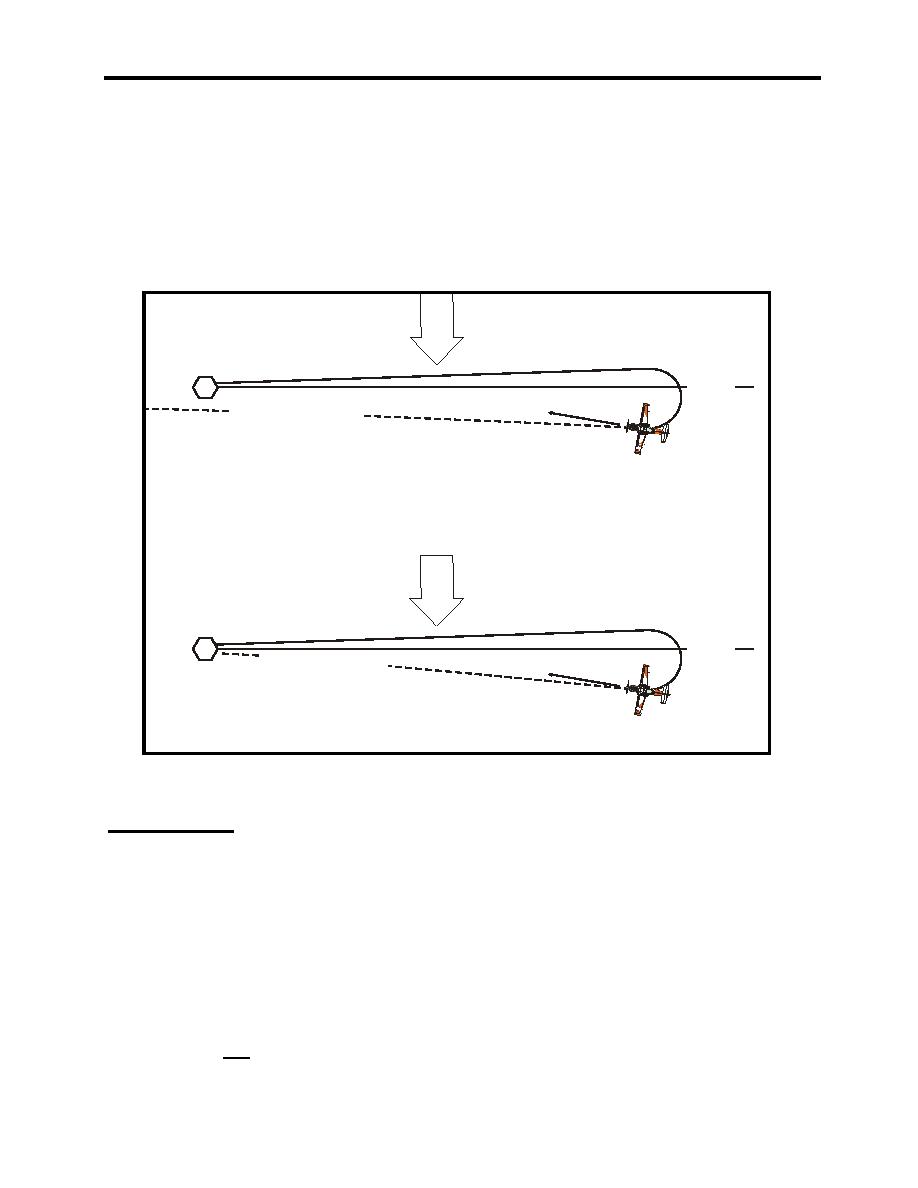 |
|||
|
|
|||
|
|
|||
| ||||||||||
|
|  T-34C INSTRUMENTS
CHAPTER SIX
some modifications to the holding procedures discussed earlier may be necessary. Just how much
you modify normal holding procedures will, of course, depend on wind speed and direction. If
you feel you need to use modified procedures, be sure to discuss this with your instructor.
You should be able to predict high winds prior to entering the holding pattern. Pay attention to
the forecast winds aloft. During the enroute phase a high crosswind component would be
indicated by the need for an abnormally large drift correction. A high headwind or tailwind
would be indicated by a groundspeed that differs significantly from predicted values.
W
I
N
D
090 R
Track over the ground
DTA HDG
A
OF 290
W
I
N
D
090 R
Track over the g
round
HDG 300
B
(Greater than DTA)
Figure 6-25 Entry Orbit
ENTRY ORBIT
On a normal entry orbit, you utilize a doubletheangle (DTA) intercept to intercept the holding
course after you turn inbound. In high winds, DTA may not do the trick. To understand why,
examine Figure 625A. In this example, our holding pattern is oriented EAST of the NAVAID
on the 90 radial. There is a strong wind from the NORTH. The aircraft has flown the outbound
leg of the entry orbit and turned, stopping the turn with a DTA set. In this case, a DTA heading
of 290 merely counteracts drift and does not effect an intercept. This situation requires an
intercept greater than DTA.
In Figure 625B, a heading of 300 is being flown. This is enough of a cut into the wind to
counteract drift and get you back on course.
RADIO INSTRUMENT FLIGHT PROCEDURES 6-43
|
|
Privacy Statement - Press Release - Copyright Information. - Contact Us |